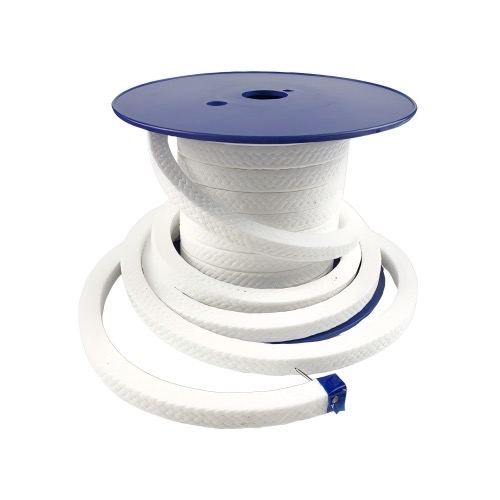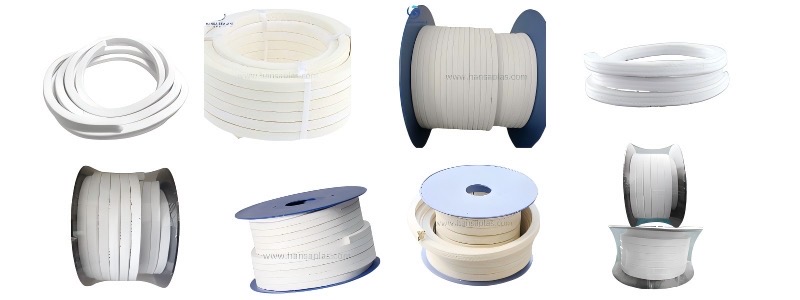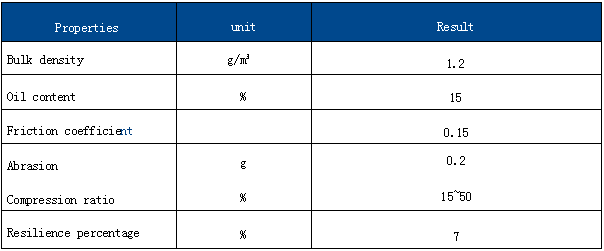
Productscpzx



Features:

Note:Different sizes can be customized.
Introduction to Polytetrafluoroethylene (PTFE) Packing
Polytetrafluoroethylene (PTFE) Packing, often referred to as PTFE Gland Packing, is a sealing product made from polytetrafluoroethylene (PTFE) material. It is primarily used for dynamic sealing and static sealing in rotating or reciprocating equipment such as valves, pumps, and agitators to prevent fluid (liquid or gas) leakage from the equipment.
The name directly reveals its core characteristics:
- Material: Polytetrafluoroethylene (PTFE), commonly known as "Teflon" or the "King of Plastics."
- Form and Function: Packing, a traditional soft sealing material typically braided or compressed into long strips with a square cross-section, wrapped around shafts or valve stems for use.
Key Characteristics
PTFE packing perfectly inherits almost all the excellent properties of PTFE material and is optimized for sealing applications:
1. Exceptional Chemical Stability: Resists almost all strong acids, strong alkalis, strong oxidizers, and organic solvents, including aqua regia. This is the primary reason for its suitability in harsh chemical environments.
2. Extremely Low Coefficient of Friction: Offers excellent lubrication, causing very little wear to pump shafts or valve stems, effectively protecting equipment and reducing drive power.
3. Broad Temperature Range: Can be used continuously within a temperature range of -200°C to +260°C, with even higher short-term temperature resistance.
4. Non-stick and Hydrophobic Properties: Almost no substances adhere to its surface, and it repels water, preventing sealing failure due to scaling.
5. Clean and Non-contaminating: As a white, pure material, it does not contaminate the sealed medium, making it highly suitable for high-purity industries such as food, pharmaceuticals, and electronics.
6. Good Flexibility: Easy to install and adjust, effectively filling sealing cavities.
Common Types and Structures
Based on manufacturing processes and reinforcement methods, PTFE packing can be divided into the following categories:
- Pure PTFE Raw Tape Packing:
- Made by layering and twisting unsintered PTFE film tapes, appearing white.
- Characteristics: Very soft, highly malleable, suitable for filling irregular cavities. However, it has low mechanical strength and is prone to cold flow.
- Braided PTFE Packing:
- PTFE fibers are braided into rope-like structures with a square cross-section, similar to braiding hair. This is the most common form.
- Characteristics: High strength, good wear resistance, not easily loosened, and long service life.
- Subtypes: Can be divided into **core-braided** (denser) and **layer-braided** (softer).
- Reinforced PTFE Packing:
- Other materials are added to improve the shortcomings of pure PTFE, such as cold flow and poor thermal conductivity.
- Common Reinforcements:
- Glass Fiber: Improves strength, wear resistance, and creep resistance.
- Graphite: Enhances self-lubrication and thermal conductivity, reducing frictional heat.
- Stainless Steel Wire: Significantly improves strength, wear resistance, and pressure resistance, suitable for high-pressure conditions.
- Expanded PTFE (ePTFE) Packing:
- Processed from expanded polytetrafluoroethylene (ePTFE) material made through special stretching techniques.
- Characteristics: Soft texture, good compression resilience, adaptable to pressure and temperature changes, and excellent sealing performance.
Main Application Areas
Due to its outstanding performance, PTFE packing is widely used in industries with demanding sealing requirements:
- Chemical Industry: Sealing for various pumps (centrifugal pumps, metering pumps), valves, and agitator shafts in reactors, used to seal corrosive chemicals.
- Pharmaceutical and Food Industries: Sealing in pharmaceutical, beverage, and dairy production equipment, compliant with hygiene standards such as FDA.
- Power Industry: Sealing for pumps and valves in power plant chemical water treatment systems.
-Paper Industry: Sealing for various bleaching agents, pulp, and chemicals.
- Electronics Industry: Sealing for transportation equipment of high-purity chemicals in semiconductor manufacturing.
Summary of Advantages
Advantages:
- Extremely strong corrosion resistance, wide applicability.
- Minimal wear on shafts/stems, protecting equipment.
- Wide temperature range.
- Clean and non-contaminating.
- Low coefficient of friction, energy-efficient.
Comparison with Other Packing Materials
| Property | PTFE Packing | Graphite Packing | Carbon Fiber Packing | Aramid Packing |
| Chemical Resistance | Excellent | Good (not resistant to strong oxidizing acids) | Good | Fair (not resistant to strong acids/alkalis) |
| Temperature Resistance | Excellent(-200~+260°C) | Excellent(up to 450°C+ in air) | Good (~320°C) | Fair (~280°C) |
| Wear Resistance | Excellent (shaft-friendly) | Good | Excellent | Excellent |
| Thermal Conductivity | Poor | Excellent | Good | Fair |
| Applications | Strong corrosion, high purity, medium-low pressure | High temperature, high speed, high pressure | High speed, high pressure, general corrosion | Low pressure, low speed, cost-effective option |
Polytetrafluoroethylene (PTFE) Packing is a high-performance sealing product with exceptional chemical inertness and a low coefficient of friction as its core advantages.
- Core Value: It is the preferred sealing solution for handling highly corrosive, high-purity media and applications requiring maximum protection of equipment shafts.
- Key Selection Factor: The appropriate type (e.g., pure PTFE, reinforced, or ePTFE) must be selected based on specific pressure, speed, temperature, and medium conditions. Its poor thermal conductivity must be considered, and cooling and lubrication measures should be implemented in high-speed applications.